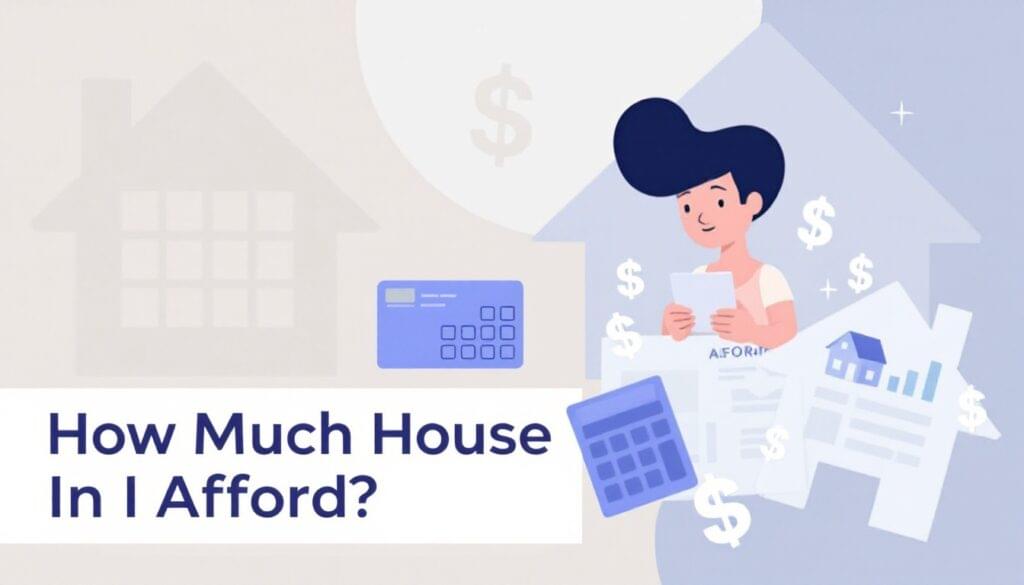Buying a home is one of the biggest financial decisions you’ll ever make. Understanding how much house you can afford is crucial to ensuring long-term financial stability. In this guide, we’ll walk you through the key factors that determine affordability, including income, debt, credit score, and loan options.
1. The 28/36 Rule: A Quick Affordability Formula
A common rule of thumb for home affordability is the 28/36 rule:
- 28% Rule: Your monthly housing expenses (mortgage, property taxes, insurance) should not exceed 28% of your gross monthly income.
- 36% Rule: Your total debt payments (including mortgage, car loans, student loans, credit cards) should not exceed 36% of your gross monthly income.
Example Calculation
If you earn $6,000 per month (before taxes):
- Max housing expenses: $1,680 (28%)
- Max total debt payments: $2,160 (36%)
2. Key Factors That Impact How Much House You Can Afford
a) Income and Employment Stability
Lenders want to see a steady income history, typically at least two years of consistent employment. Self-employed buyers may need to provide additional documentation.
b) Credit Score and Interest Rates
Your credit score directly affects the interest rate you qualify for:
- Excellent (740+) → Lower rates, lower monthly payments
- Good (670-739) → Competitive rates
- Fair (580-669) → Higher rates, higher costs
- Poor (Below 580) → May need a larger down payment or alternative financing
c) Debt-to-Income (DTI) Ratio
Lenders calculate your DTI ratio to determine risk. A lower DTI makes loan approval easier.
- Formula: (Total monthly debt ÷ Gross monthly income) × 100
- Example: ($1,200 in total debt ÷ $6,000 income) × 100 = 20% DTI (a strong ratio)
d) Down Payment and Loan Type
- Conventional loans: 3–20% down
- FHA loans: 3.5% down (for credit scores 580+)
- VA loans: 0% down (for veterans)
- USDA loans: 0% down (for rural homebuyers)
A larger down payment lowers monthly payments and avoids private mortgage insurance (PMI).
3. How to Estimate Your Home Price Range
Use this simple formula:
(Annual Income × 3) to (Annual Income × 5) = Home Price Range
- Example: If you make $80,000 per year, your affordable range is $240,000 to $400,000, depending on debt, credit, and down payment.
Mortgage Affordability Table (Based on 30-Year Loan at 7% Interest)
| Income | 10% Down | 20% Down | Monthly Payment (PITI) |
|---|---|---|---|
| $50,000 | $150,000 | $175,000 | ~$1,500 |
| $75,000 | $225,000 | $275,000 | ~$2,250 |
| $100,000 | $300,000 | $375,000 | ~$3,000 |
| $150,000 | $450,000 | $550,000 | ~$4,500 |
(PITI = Principal, Interest, Taxes, Insurance)
4. Additional Costs to Consider
- Closing Costs: 2–5% of home price
- Property Taxes: Varies by state
- Homeowners Insurance: $1,000–$3,000 per year
- HOA Fees: If applicable
5. Free Mortgage Affordability Calculators
Use online tools to fine-tune your budget. Try our home affordability calculator to get an exact estimate based on your financial profile.
Final Thoughts
Knowing how much house you can afford helps you avoid financial stress and make a smart investment. Stick to the 28/36 rule, consider your full financial picture, and get pre-approved before house hunting.
Need Help?
Speak with a mortgage advisor or lender to get a personalized assessment of your buying power.

